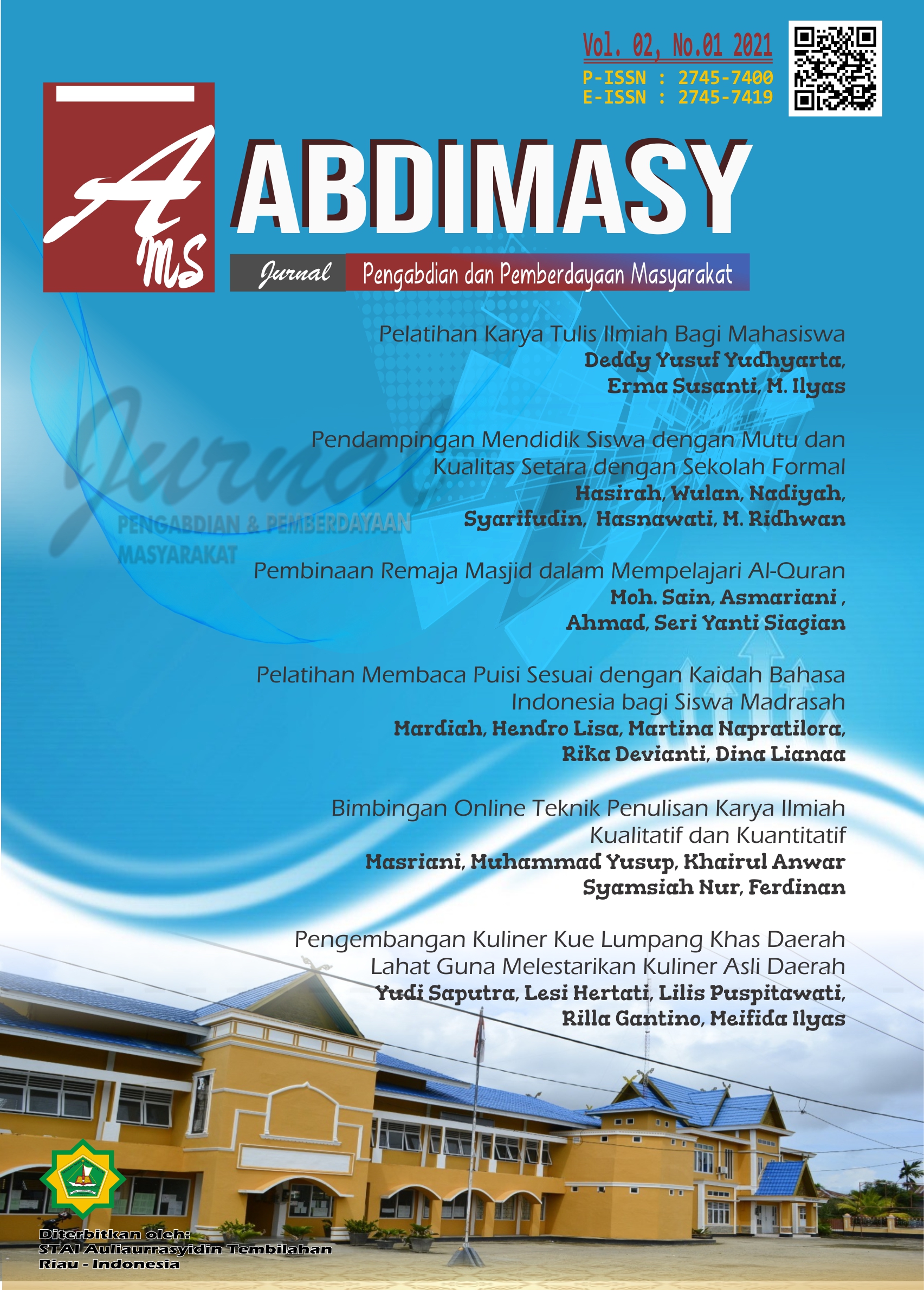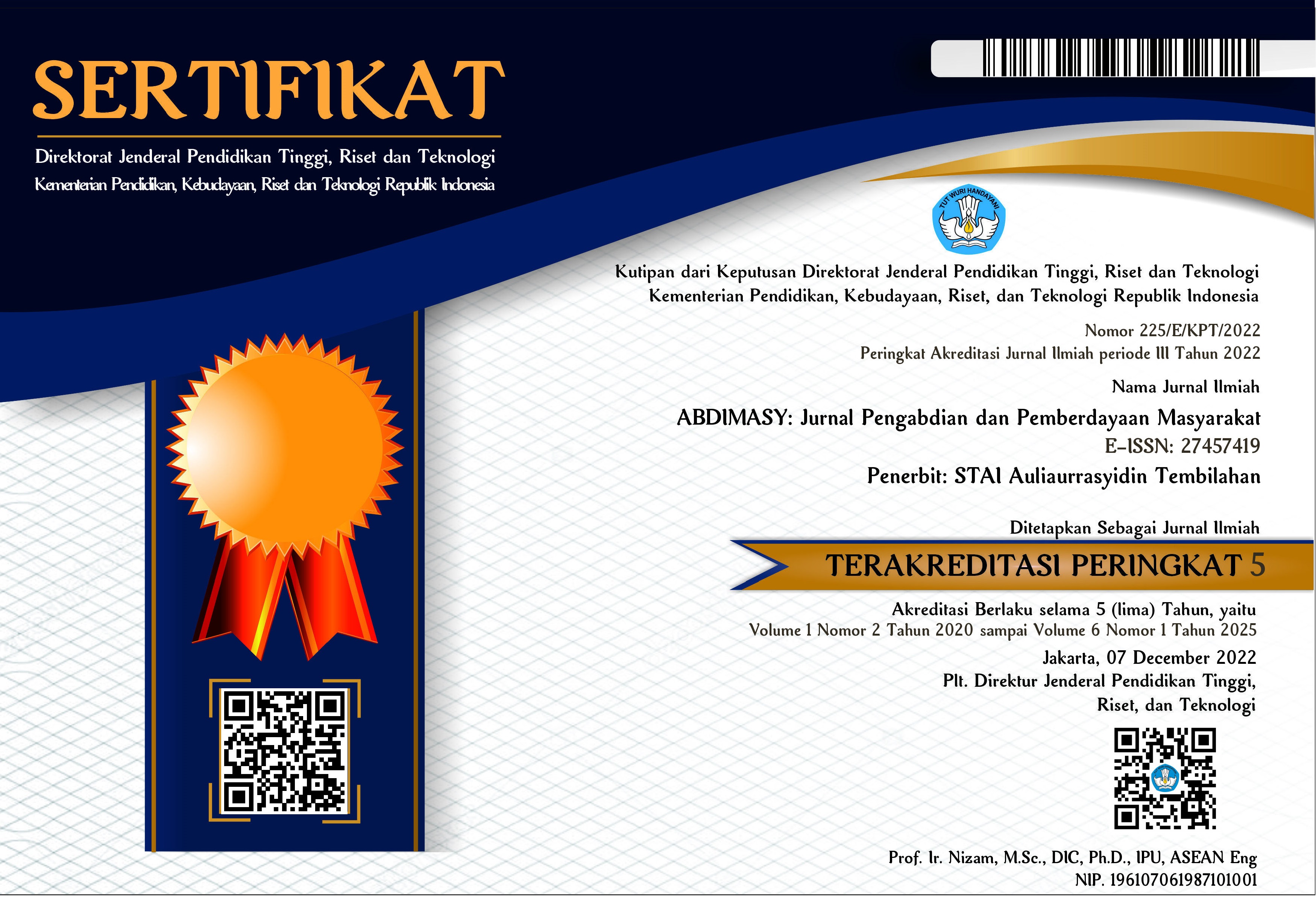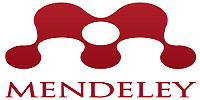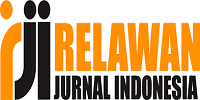Pendampingan Mendidik Siswa dengan Mutu dan Kualitas Setara dengan Sekolah Formal
DOI:
https://doi.org/10.46963/ams.v2i1.329Keywords:
Information System, Non-Formal Education, SchoolAbstract
Non-Formal Education is an alternative solution. In this study, a school data management information system was built consisting of five levels of users, namely the main administrator, school administrator, teachers, students, and community. The data were in the form of school data, facilities, managers, teachers, students, and general information. In addition, there was a Learning Program Unit (SAP) which informed the materials that must be delivered in the learning process. This information system was equipped with a learning application for the National Examination for students, consisting of subject material and practice of multiple-choice questions for economics, sociology, Indonesian, English, Geography, and Mathematics. The data constructed from the Education Office of Muaro Jambi Regency and the organizers of the package C program. While the learning application materials came from certain high school textbooks.
Downloads
References
Arief, S. S. dkk. (2011). Media Pendidikan, Pengertian, Pengembangan, dan Pemanfaatannya. Jakarta: PT. Raja Grafindo Persada.
Depdiknas. (2004). Acuan Pelaksanaan Pendidikan Kesetaraan program Paket A, B, C. Jakarta: Depdiknas.
Depdiknas. (2006). Konsep dan Strategi Pengembangan Pusat Kegiatan Belajar Masyarakat (PKBM). Jakarta: Depdiknas.
Dinas Pendidikan Kabupaten Muaro Jambi. (2019). Data penyelenggara ujian Kejar Paket C. Muaro Jambi
Joesoef, S. (2004). Konsep dasar pendidikan luar sekolah. Jakarta: Bumi Aksara.
Sihombing, U. (2001) Pendidikan Luar Sekolah Managemen Strategi. Jakarta: PD. Mahkota.
Suryadi. A. (2006). Proses Pelaksanaan dan Pembelajaran Pendidikan Kesetaraan. Jakarta: Depdiknas.
Downloads
Published
Issue
Section
License
Authors who publish with this journal agree to the following terms:
1. Copyright on any article is retained by the author(s).
2. The author grants the journal, right of first publication with the work simultaneously licensed under a Creative Commons Attribution shareAlike 4.0 International License that allows others to share the work with an acknowledgment of the work’s authorship and initial publication in this journal.
3. Authors are able to enter into separate, additional contractual arrangements for the non-exclusive distribution of the journal’s published version of the work (e.g., post it to an institutional repository or publish it in a book), with an acknowledgment of its initial publication in this journal.
4. Authors are permitted and encouraged to post their work online (e.g., in institutional repositories or on their website) prior to and during the submission process, as it can lead to productive exchanges, as well as earlier and greater citation of published work.
5. The article and any associated published material is distributed under the Creative Commons Attribution-ShareAlike 4.0 International License





2.png)



